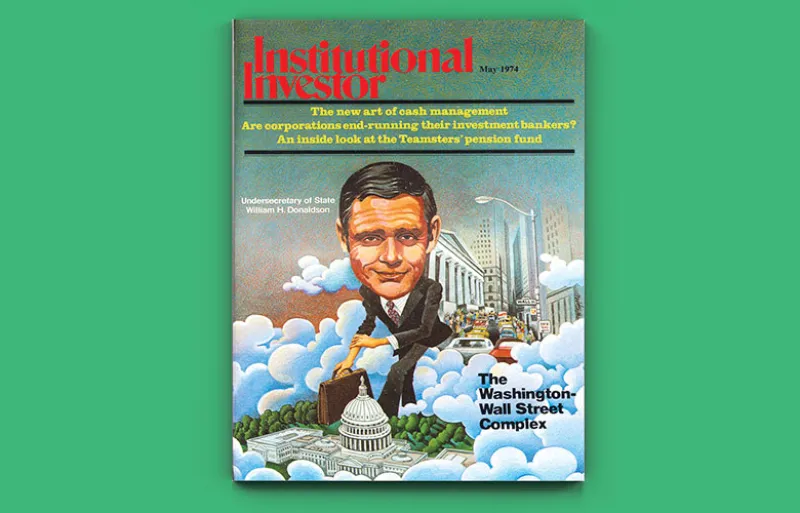The connections between Washington, D.C. and Wall Street detailed in Institutional Investor’s May 1974 issue remain strong in 2018. “People in Washington think that Wall Street symbolizes everything that’s wrong with the country and Wall Streeters believe that everything wrong with the country emanates from Washington,” the report begins.
A link between these domestic superpowers began in the early 1950s, according to the report, and only grew over time. By the mid 1960s, investment houses turned to Securities and Exchange Commission staffers for help understanding complex compliance issues.
“They soon found out that even the most savage regulators could quickly be tamed, and their talents and knowledge of the laws could be exploited,” wrote author John Thackray.
Wall Street firms thus opened season on public officials, poaching SEC employees for their own good. And the employees likewise stood to benefit in the then–novel arrangement.
“It goes without saying, of course, that Wall Street firms had something else going for them: the ability to pay more than the government does,” Thackray wrote.
Meanwhile, jobs in Washington, D.C. served to bolster the career of Wall Streeters looking to add value to their resumes.
“While many civil servants have dedicated themselves to the relatively low-paying, but rewarding, life of public service, others view their Washington jobs as a short-term way of enhancing their value on the job market,” Thackray wrote.
Today, despite intense public distrust of Washington insiders and the financial class alike, the revolving door set in motion during the Nixon administration spins faster than ever.
In perhaps the apotheosis of the alliance thus far, Wall Street denizens fill the government of President Donald Trump, who vowed to American citizens he would “drain the swamp” for the “little guy.” Seats of government power went to private equity baron Wilbur Ross and a pair of Goldman Sachs alums, Gary Cohn and Steven Mnuchin, to name just a few of the finance insiders who went to D.C. under Trump in 2017.
Perhaps the most notorious of them all is Anthony Scaramucci. Founder of both SkyBridge Capital and the SALT Conference, and a charismatic pro-Trump pundit, Scaramucci was named White House communications director in July 2017. Just ten days later, he was ousted, following a vivid exchange with Ryan Lizza of The New Yorker about his White House peers.
This ten-day tenure recalls a question posed back in 1974: “How much real political power does the Washington–Wall Street Complex actually exercise?”







